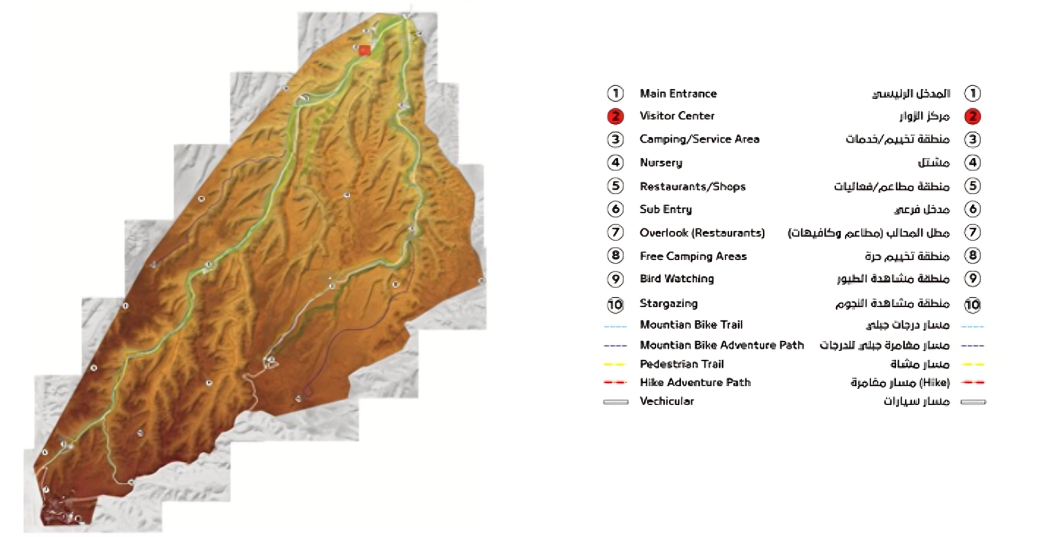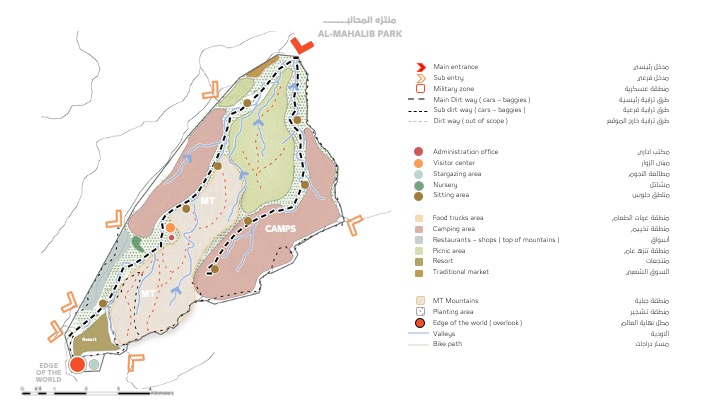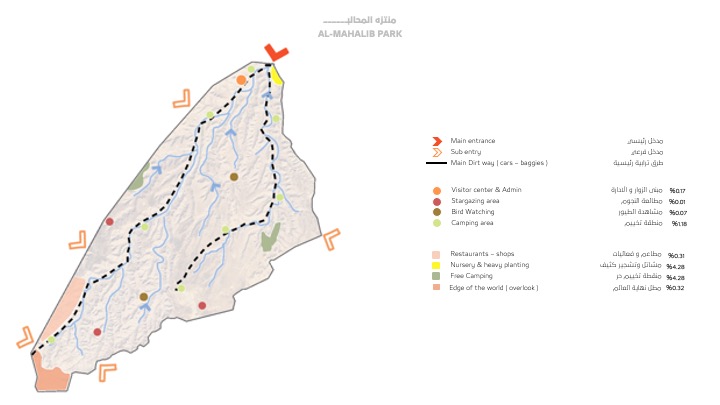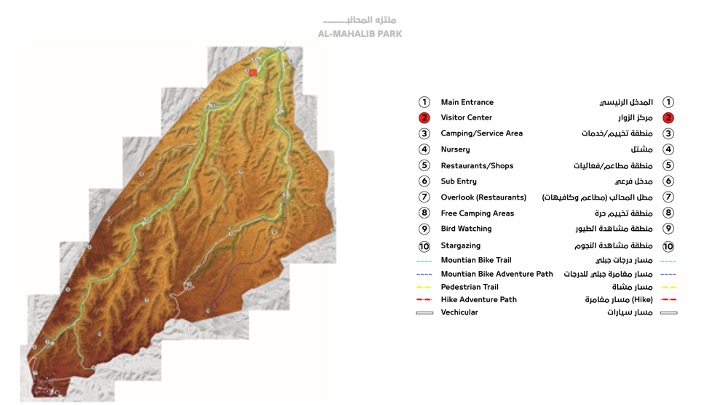
This ambitious project aims to establish the seventh and eighth national parks in the Riyadh region, specifically in the areas of Al-Haisiyah and Al-Mahalib. The primary goal is to leverage the area’s biodiversity, promote ecological restoration, and rehabilitate degraded lands.
The project’s core objectives center around environmental preservation and restoration. A primary focus is biodiversity conservation, aiming to safeguard and enrich the region’s unique plant and animal life. Concurrently, ecological restoration efforts will be undertaken to revitalize degraded ecosystems and stimulate natural renewal processes. To complement these conservation efforts, the project emphasizes environmental education to foster public awareness and understanding of the ecosystem’s importance. Additionally, scientific research will be conducted to monitor the park’s ecological health and inform management decisions.
The project will establish diverse habitats, including desert, steppe, and wadi environments. Critical areas will be designated as protected zones to ensure long-term biodiversity preservation. Moreover, local communities will be actively involved in the planning and management process to foster a sense of ownership and stewardship.
Critical areas will be designated as protected zones to ensure long-term biodiversity preservation. To enhance the visitor experience, the parks will feature visitor centers, trails, and other facilities. A strong emphasis will be placed on sustainable practices in park development, such as water conservation and renewable energy utilization. Educational programs such as guided tours, workshops, and informative exhibits will enhance visitors’ understanding of the park’s ecosystem. Furthermore, the parks will accommodate scientific research by providing dedicated facilities for scientists to study the park’s unique environment.
The creation of these national parks aligns seamlessly with Saudi Arabia’s Vision 2030. By prioritizing environmental protection and conserving the country’s natural resources and biodiversity, the project contributes significantly to these goals. Moreover, the parks’ sustainable development approach, which includes minimizing environmental impact, is in line with the vision’s sustainability objectives. Ultimately, by offering recreational opportunities and access to nature, the parks enhance the quality of life for citizens, fulfilling another key aspect of the Vision 2030.




